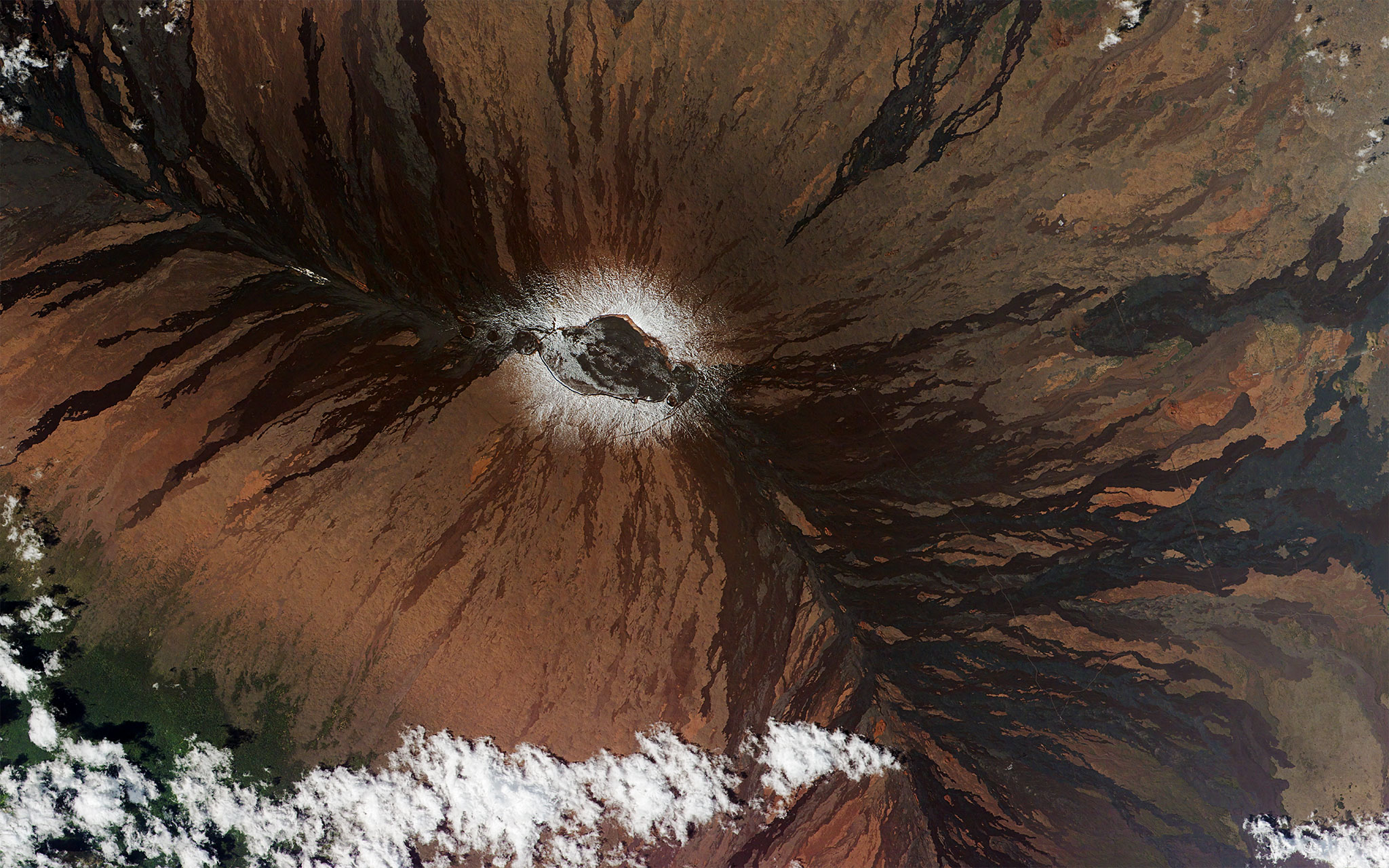Now, Penn State researchers have used artificial intelligence (AI) to clear up that noise, drastically facilitating and improving near real-time observation of volcanic movements and the detection of volcanic activity and unrest.
“The shape of volcanoes is constantly changing and much of that change is due to underground magma movements in the magma plumbing system made of magma reservoirs and conduits,” said Christelle Wauthier, associate professor of geosciences and Institute for Data and Computational Sciences (ICDS) faculty fellow. “Much of this movement is subtle and cannot be picked up by the naked eye.”
Geoscientists have used several methods to measure the ground changes around volcanoes and other areas of seismic activity, but all have limitations, said Jian Sun, lead author of the paper and a postdoctoral scholar in geosciences, funded by Dean’s Postdoc-Facilitated Innovation through Collaboration Award from the College of Earth and Mineral Sciences.
He added that, for example, scientists can use ground stations, such as GPS or tiltmeters, to monitor possible ground movement due to volcanic activity. However, there are a few problems with these ground-based methods. First, the instruments can be expensive and need to be installed and maintained on site.
“So, it’s hard to put a lot of ground-based stations in a specific area in the first place, but, let’s say there actually is a volcanic explosion or an earthquake, that would probably damage a lot of these very expensive instruments,” said Sun. “Second, those instruments will only give you ground movement measurements at specific locations where they are installed, therefore those measurements will have a very limited spatial coverage.”
On the other hand, satellites and other forms of remote sensing can gather a lot of important data about volcanic activity for geoscientists. These devices are also, for the most part, out of harm’s way from an eruption and the satellite images offer very extended spatial coverage of ground movement. However, even this method has its drawbacks, according to Sun.
“We can monitor the movement of the ground caused by earthquakes or volcanoes using RADAR remote sensors, but while we have access to a lot of remote sensing data, the RADAR waves must go through the atmosphere to get recorded at the sensor,” he said. “And the propagation path will likely be affected by that atmosphere, especially if the climate is tropical with a lot of water vapor and clouds variations in time and space.”
According to the researchers, who report their findings in a recent issue of the Journal of Geophysical Research, a deep learning method they developed acts much like a jigsaw puzzle master. By taking pieces of data that are clear, the system can begin to fill in the holes of “noisy” data, holes created by the interference of weather and other instrumental noises. It can then build a reasonably accurate picture of the land and its movements.
Using this deep learning method, scientists could gain valuable insights into the movement of the ground, particularly in areas with active volcanoes or earthquake zones and faults, said Sun. The program may be able spot potential warning signs, such as sudden land shifts that might be a portent of an oncoming volcanic eruption, or earthquake.
“It’s really important for areas close to active volcanoes, or near where there have been earthquakes, to have as early warning as possible that something might happen,” said Sun.
Deep learning, as its name suggests, uses training data to teach the system to recognize features that the programmers want to study. In this case, the researchers trained the system with synthetic data that was similar to satellite surface deformation data. The data included signals of volcanic deformation, both spatially and topographically correlated atmospheric features and errors in the estimation of satellite orbits.
Future research will focus on refining and expanding our deep learning algorithm, according to Wauthier.
“We wish to be able to identify earthquake and fault movements as well as magmatic sources and include several underground sources generating surface deformation,” she said. “We will apply this new groundbreaking method to other active volcanoes thanks to support from NASA.”
Sun and Wauthier also worked with Kirsten Stephens and Machel Higgins, both doctoral candidate in geosciences; Melissa Gervais, assistant professor of meteorology and atmospheric science and ICDS co-hire; Guido Cervone, professor of geography, meteorology and atmospheric Science and ICDS associate director; and Peter La Femina, associate professor of geosciences.
The National Aeronautics and Space Administration, The National Science Foundation, the Penn State College of Earth and Mineral Sciences supported this work.
Computations were done using the ICDS’s Roar supercomputer.


